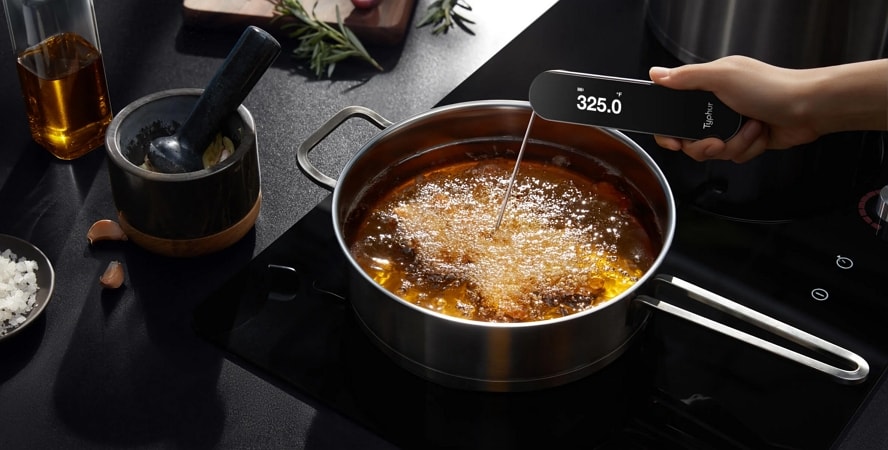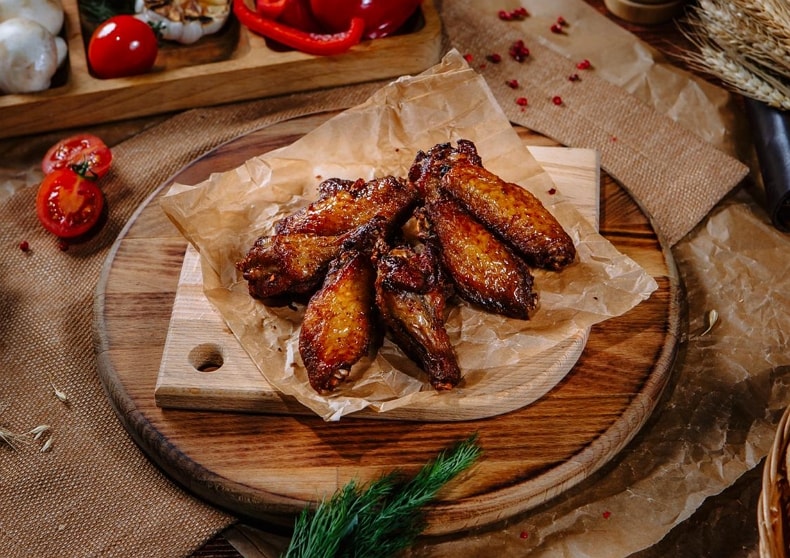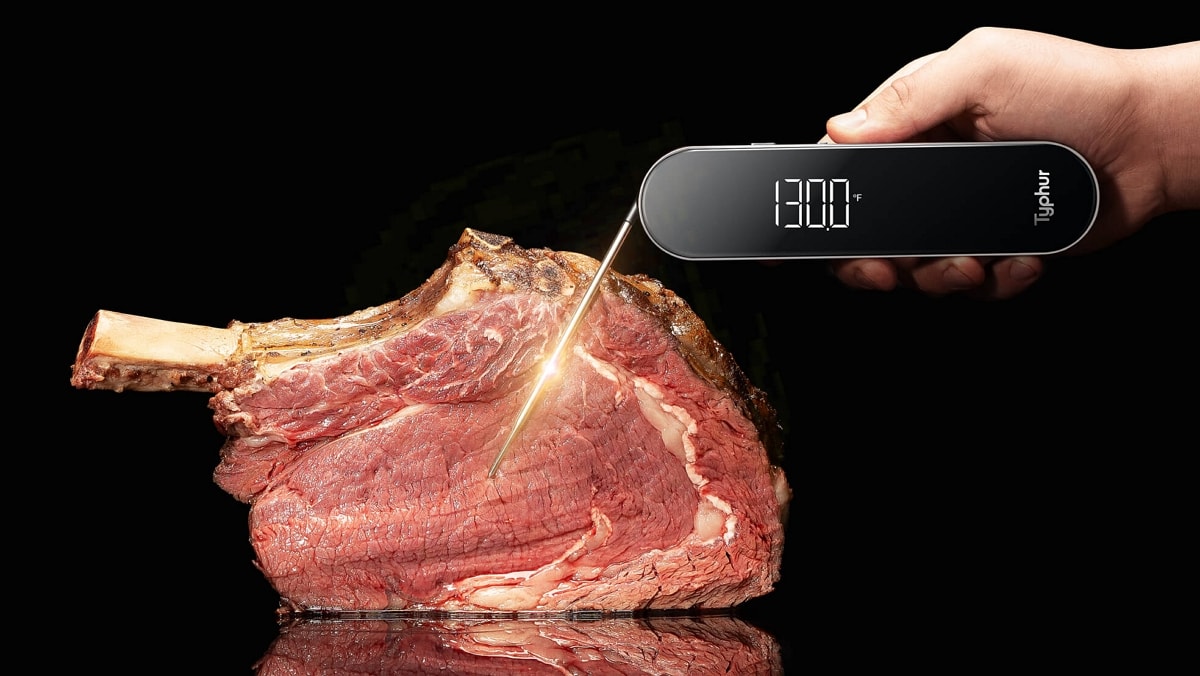When it comes to cooking, we often use oils as part of the cooking process. However, as you will know, oils have a ‘smoke point’ – understanding oil smoke points is very important. Paying close attention to the smoke point of oils is very easy, as this can help you avoid burning the oil.

Remember, too, that every oil is different; the olive oil smoke point differs from the canola oil smoke point, which differs again from the vegetable oil smoke point, and so on. Whether you are cooking on a frying pan or using something like a Typhur Dome air fryer, you want to make sure you can pay close attention to the smoke point of the oils you are using. This will help you to get maximum flavor for minimal risk.
To help you understand this, let us look at the smoke point topic for oils a little closer below. Hopefully, this can allow you to avoid any headaches when cooking!
Table of contents
What Is The Smoke Point Of Oils? Why Is It Important?
Every oil out there has a smoke point; that is just a fact. There is even a butter smoke point. Everything you might use to aid your cooking is likely to have a smoke point. What are smoke points?
A smoke point is the temperature an oil can reach before it loses that glistening look and begins to burn. When the oil is burning, it will naturally start to cause smoke to emerge. This leaves that burnt, intense flavor that you want to avoid when cooking.
Why does a smoke point happen? Because, as the oils reach a certain temperature level, they break down.
Knowing the smoke point of an oil is very important as it can help you avoid imparting that burnt flavor to the foods you are eating. Also, when an oil reaches the smoke point, it begins to melt away any of the nutrition and health benefits of that oil, thus ruining the taste and rendering the oil useless from a nutritional perspective.
This also can introduce a series of health issues that, without reaching the smoke point, would be avoided, such as releasing free radicals into your cooking.
What determines the smoke point of oil? It depends. Most of the time, it comes down to whether the oil has been refined. Refined oils have a higher smoke point, but they have been more or less stripped of many of the remnants of their previous form.
In general, oils with a high smoke point include vegetable oils; this can consist of canola and avocado oils. By contrast, organic oils such as nut and olive oils have a much lower smoke point but are more nutritiously dense.
Benefits Of High Smoke Point Oil
A high smoke point for oil is a good thing because it means that the oil can be used in more diverse ways when cooking. The benefits of a high smoke point oil mean that you can utilize this for more varied forms of cooking. Oils with a high smoke point can take a higher heat and thus are more suitable for frying foods or searing your meats.
You do not have to worry much about these oils burning and thus ruining the flavor of that lovely food you are cooking. If you go down the route of frying food, you need an oil with a high smoke point. Without that, you run the risk of your food tasting arid and burnt, which will obviously ruin the flavor and enjoyment you get from it.
For some who happen to reuse cooking oil, too, this means that the smoke point will be reduced every time. So, if you intend to keep using cooking oils repeatedly, remember that the smoke point will come down gradually with each usage. To begin with, using a higher smoke point oil gives you more time until the smoke point becomes low enough to be replaced.
Oil Smoke Point Chart
Understanding oil smoke points is crucial for selecting the appropriate oil for various cooking techniques.
While there are so many oils out there on the market that it might be hard to give you a proper list of every oil, here are some of the most useful oils that you might be using in cooking, alongside their smoke points and what they tend to be utilized for in cooking:
| OIL TYPE | SMOKE POINT °F | USED FOR? |
| Olive | 325-375°F | Sautéing, finishing |
| Corn | 400-450°F | Frying |
| Canola | 375-450°F | Deep frying |
| Sesame | 410-450°F | Sautéing |
| Grapeseed | 420°F | Sautéing, stir-frying |
| Sunflower | 450°F | Deep frying, stir-frying, grilling |
| Flax | 225°F | Drizzling and dressing |
| Almond | 430°F | Grilling and roasting |
| Avocado | 520°F | Searing, stir-frying, grilling, roasting |
| Almond | 430°F | Grilling, roasting |
| Coconut | 350°F | Sautéing, baking |
| Walnut | 320°F | Drizzling, dressing |
Refer to the above chart for guidance, it’s recommended to use the Typhur InstaProbe instant-read thermometer which has a temperature range from -58 to 572 °F (-49.9 to 299.9°C). It’s capable of checking the oil’s temperature, to ensure cooking below the smoke point.

How To Choose The Right Cooking Oil
There are, of course, many different forms of oil to choose from out there. If you are having a hard time choosing the right cooking oil, then we recommend that you try and keep the following in mind:
1. For Searing
If you are going down the route of searing food, you naturally need something that can handle a lot of heat. From our above list, our primary choice of oil for cooking would be avocado oil. The 520°F temperature means that you can find that the avocado oil smoke point is very generous. This should give you enough time to finish cooking without worrying about the oil spoiling.
2. For Sautéing
A sauteed meal can be done with a range of different oils. Our primary choices are Olive oil, sesame oil, grapeseed oil, and coconut oil. The olive oil smoke point of 325-375°F is easy to work with for sauteing, as is the sesame oil smoke point of 410-450°F, grapeseed oil smoke point of 420°F, and coconut oil smoke point of 350°F – these are all ideal for sautéing your food.
3. For Deep-Frying
If you intend to go down the route of deep frying your food, then you have a few options– our primary choice, though, would be sunflower oil. The sunflower oil smoke point of 450°F is perfect for deep frying, which makes it one of our primary choices when choosing a smoke point. Sunflower oil is one of the easiest to use in high-heat cooking, like deep frying, so we recommend that you stick to that if possible. Another choice would be canola oil, where the canola oil smoke point of 375-450°F is ideal.
4. For Stir-Frying
If you enjoy stir fry, you should use one of three oil kinds: grapeseed oil, sunflower oil, and avocado oil. Given that the avocado oil smoke point of 520°F is the highest on our list, it is great for stir-frying and suitable for just about any cooking. Meanwhile, grapeseed oil’s 420°F is durable enough, while sunflower oil’s 450°F is also ideal for stir-frying.
FAQs about Cooking Oil Smoke Points
Now that you hopefully understand more about the smoke point of oil, here are some important FAQs to take into account that might help you get a better grasp on the topic further:
Yes, it can be –you do not have to worry about the oil overcooking and burning, thus ruining the flavor. A high smoke point generally means that cooking options like frying are easier, requiring less attention to detail and a longer window for cooking.
Low-smoke point oils tend to be more natural and, thus, more nutritious. This means they produce a better flavor, in general, from the oil itself, but obviously, you need to pay a lot of attention during cooking to prevent the oil from smoking.
Refined avocado oil has a temperature smoke point of around 520°F. That is a lot and easily the highest that we have found – the nearest that we have seen to this is canola oil, which can be cooked at around 400-475°F.
Not really. At 325-375°F, olive oil sits pretty comfortably in the medium-tier range. This is why it can be used for many different methods, ranging from serving food to completing a salad dressing.
Olive oil will begin to burn at around 374-405°F in general. This means you must pay extra attention when cooking olive oil, as it is surprisingly easy to watch it go from being fine to reaching that dreaded olive oil smoke point.
The best oils to use at 450°F include corn, canola, sunflower, and peanut oils. Sesame oils, too, can be taken to around 450F, though that is the maximum that we would recommend taking sesame oil.
Some of us use butter when cooking, especially when creating sauces. Typically, the butter smoke point to watch out for is around 350°F. Butter will naturally begin to smoke at this point. However, clarified butter can be cooked up to 450°F before it will be at risk of burning.
Conclusion
Now that you understand the smoke point of certain oils, you can use this to help inform your cooking and make your life a little bit easier. For an easier time keeping a close eye on the temperature of oils, why not use the Typhur InstaProbe? This can simplify cooking with oils by ensuring you can keep a very close eye on the temperature of your dish to avoid that smoke point.



